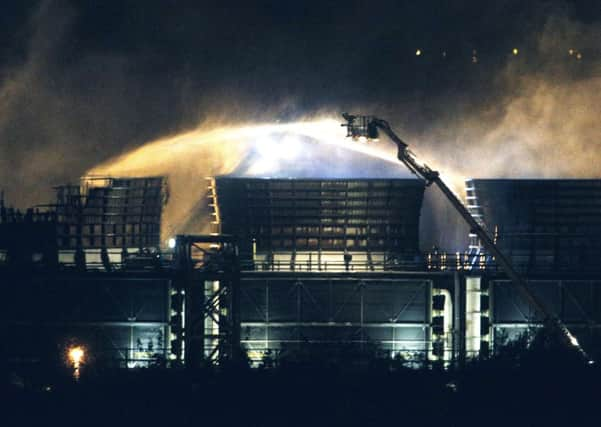Factories could shut down in winter power cut


Firms would have to be paid to shut down if the UK sees a repeat of the 2010 winter conditions, or worse, as a result of continued uncertainty over energy capacity.
It came after fires that have resulted in the permanent shutdown of Ironbridge in Shropshire and the temporary closure of Ferrybridge in West Yorkshire.
Advertisement
Hide AdAdvertisement
Hide AdAnother power station, at Barking, is also to close, while a planned return to service for four EDF nuclear reactors at Heysham in Morecambe, Lancashire, and at Hartlepool, will see them come back at only 75% capacity.
A fire put half of operations out of action at Didcot B power station in Oxfordshire - which has capacity to supply a million homes - last week. But the affected part of the site is expected to return to around 50% service this week.
Bad weather of the kind seen in early 2010 could put so much strain on the National Grid that it has to turn to “last resort” contingencies such as the factory shutdowns and firing up unused power plants.
Even after taking account of these there remains a one in 31 risk of needing emergency measures including voltage reduction “brown outs” - effectively dimming the lights.
Advertisement
Hide AdAdvertisement
Hide AdThis risk is the same as last year but only because of the plans to be able to ask industrial customers to reduce demand during peak periods and to ensure extra reserve capacity.
These contingency arrangements are together expected to cost customers an additional £1 on household bills.
National Grid’s winter outlook, unveiled at an Ofgem seminar in central London, revealed that the capacity margin this winter was expected at 4.1%, the narrowest since 2006/7.
The measure - which reflects the gap between total electricity generating capacity and peak demand - could narrow to 2.8% in the event of bad weather of the kind seen once every 20 years, and last experienced in February and March 2010.
Advertisement
Hide AdAdvertisement
Hide AdThis would see National Grid unable to meet its “basic reserve requirement” of spare capacity needed to run the system and forced to adopt the contingency arrangements it has put in place.
The operator earlier this year signed deals with 431 industrial sites which will be paid to shut down at peak hours if necessary.
The National Grid report has seen the Government accused of “unacceptable” energy planning failings.
Shadow energy secretary Caroline Flint said: “The security of our energy supply has not been helped by the fall in investment under this Government.”
Advertisement
Hide AdAdvertisement
Hide AdEnergy and business minister Matthew Hancock said: “We have given National Grid new tools they need to meet energy demand this winter and are working through a long-term plan to turn around a legacy of underinvestment in our energy sector.”